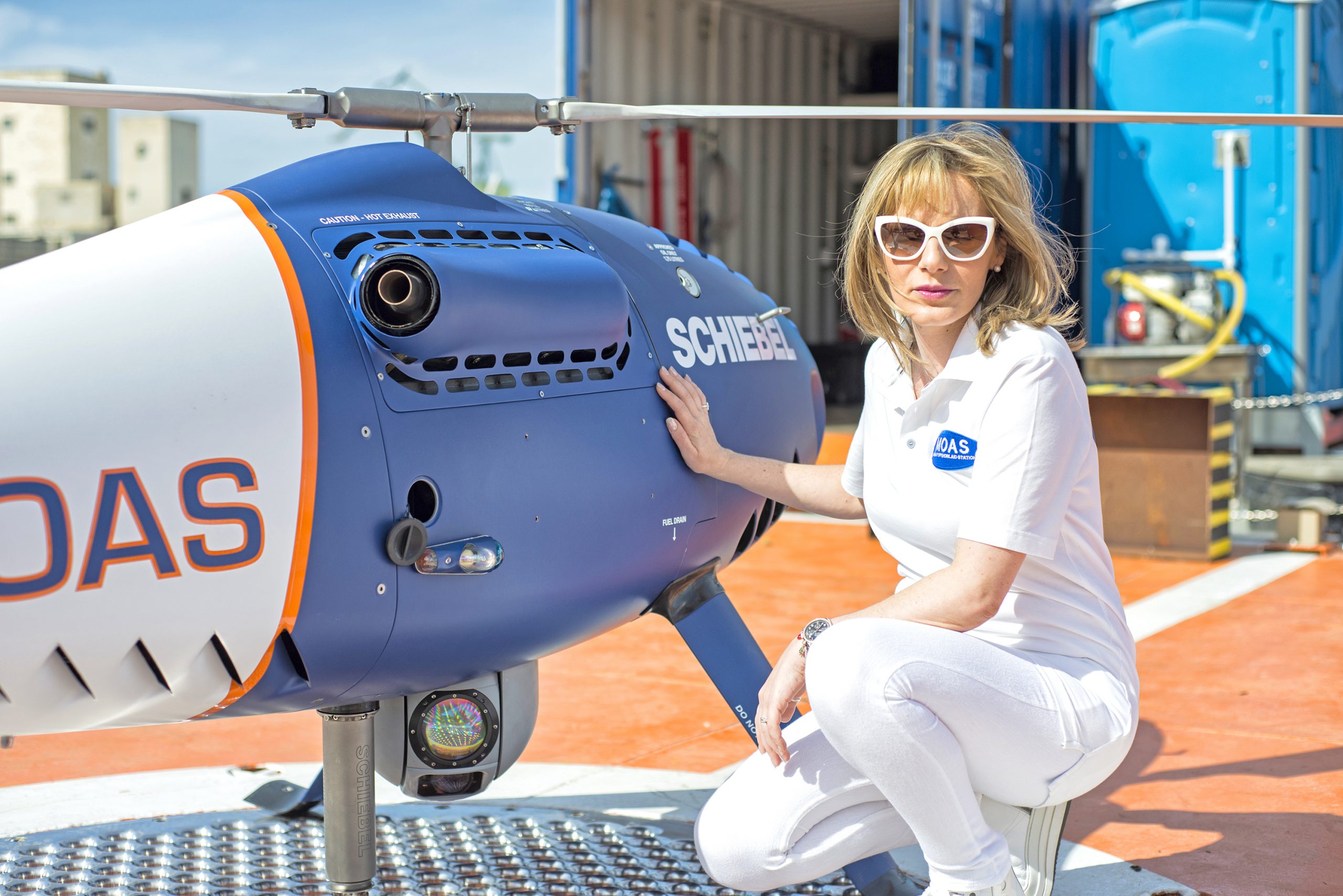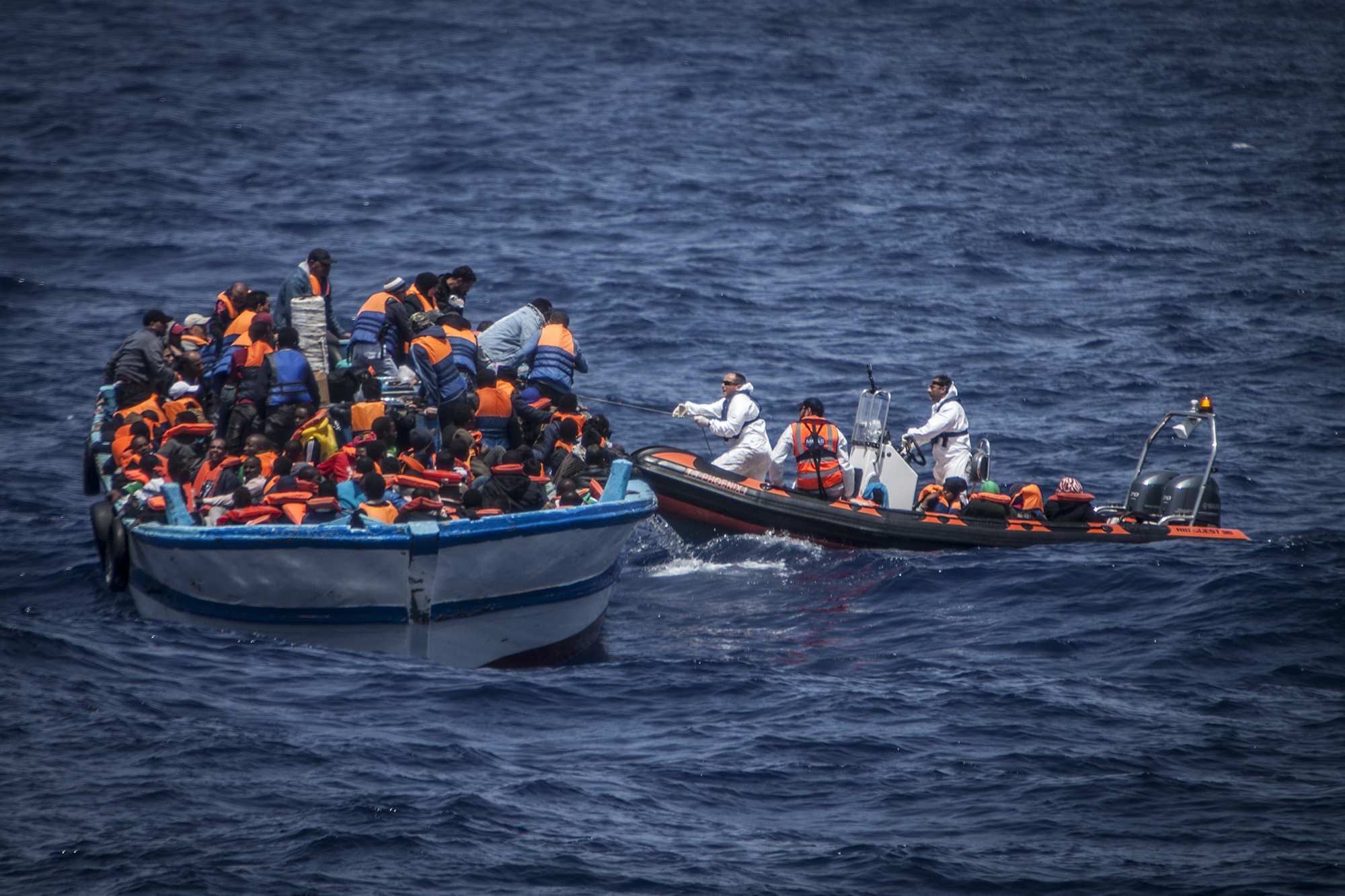A millionaire American entrepreneur’s unique solution to the refugee crisis currently roiling Europe has saved the lives of over 10,000 migrants this year, as European leaders struggle to muster a cohesive response to the humanitarian crisis.
Businessman and hurricane Katrina survivor Christopher Catrambone saw the refugee crisis firsthand while on vacation and decided he could not stand by while thousands drowned in the Mediterranean Sea. Pouring millions of dollars into a rescue ship equipped with drones, Catrambone and his wife Regina launched the Migrant Offshore Aid Station.
Speaking from onboard the Phoenix, the 165-foot rescue boat the couple purchased, Regina Catrambone told the Washington Examiner on Friday that they had rescued 352 people that day, 113 of them children.
“It was very hard and emotional having all these youth on board that could die if we didn’t arrive on time,” she said.
Regina told the Examiner that many of the women they rescue have been raped. Sometimes when she is helping them get dressed, she sees marks on their legs and shoulders from the abuse they have endured.
“I think perhaps it is much easier to heal those types of wounds, than their memory,” she said.

(Courtesy MOAS.EU)
The project had an inauspicious start two summers ago. Regina said that while cruising on a yacht near Lampedusa, an Italian island favorite of tourists off the coast of Sicily and Tunisia, she noticed a thick jacket floating in the water, which was out of place in the hot summer.
She asked the captain of the rented yacht what it was.
“That is the jacket of a migrant who didn’t make it,” said Marco Cauchi, who is now in charge of MOAS’ search and rescue mission.
The contrast between the gorgeous summer holiday the Catrambones had set out to enjoy and the migrants, fleeing wars and persecution, drowning in the beautiful blue sea below was “a provocation,” Regina said.
“We decided we couldn’t be indifferent to this situation,” said Regina. “Everyone was dying out at sea.”
Over 2,000 migrants, fleeing wars and persecution in Africa and the Middle East, have died in the Mediterranean this year, making it the world’s most dangerous migrant route.
Crammed into overcrowded rubber dinghies or onto boats with quadruple their capacity, human smugglers charge migrants exorbitant fees to make the hazardous crossing. Sometimes the smugglers simply abandon the free-floating dinghies.
Heeding Pope Francis’ advice that people should not be indifferent to migrant suffering, the Catrambones threw themselves into their rescue project. “At that time, there weren’t enough coast guard assets at sea to conduct search and rescue, so we felt we found a good place to start,” Christopher Catrambone told the International Business Times.
Christopher made his fortune after losing his home in 2005 to Hurricane Katrina. He moved to Europe and his business Tangiers International, which provides insurance to certain airlines and to journalists in war zones, became extremely successful.
He purchased a fishing trawler for $1.6 million and spent another $3.5 million refitting it for the rescue mission. The couple exhausted their personal savings on the rescue operation and crowd-funded donations for drones that they use to spot vessels in distress.
The drones allow the operation to be both proactive and reactive, Regina told the Examiner. “Reactive to the call of the maritime coordination center in Rome, and proactive because [by] launching the drones we can spot a vessel in distress and … give them the coordinates,” she said.
The Italian Navy deploys two frigates, two search and rescue vessels, and an amphibious assault carrier to help with rescue efforts. MOAS cooperates with the Italian rescue efforts. Both attempt to save any migrants they see.
Just as the Catrambones were starting the project, over 300 migrants died off the coast of Lampedusa, “left alone in a sea of indifference,” says Regina.

(Courtesy MOAS.EU)
The most dangerous part of the search-and-rescue operation is when they approach the migrants’ vessels, because they are overfull and at risk of tipping over at any point.
“Just a moment of bad coordination with the people on board can cause the boat to flip over,” said Regina. “So the people can die, just like that, in a second.”
When MOAS approaches the vessels in distress, they immediately distribute life jackets. Regina explained that migrants are also often trapped below deck, where they are at risk of suffocating from toxic engine fumes.
“The heat is so high that they cannot breathe” below deck, she said. “I can tell you that [it is] an inhuman situation. People are down there and my fear is that we need to be very fast and very coordinated because every single second is important for these people that are down there.”
“There is only a small, 50-centimeter hole that is the entrance and exit of the engine room in which all these people are staying,” Regina said, adding that the conditions are “extremely inhumane.”
Approximately one third of the migrants MOAS rescued Friday, trapped in the toxic fumes, were children.
“I cannot even imagine what would have happened if we had arrived 15 minutes” after we did, Regina told the Examiner.
John, a bright, eight-year-old boy from Eritrea, made a deep impression on Regina. The day before, he had been helping other children put on their life jackets. Very tired, she went to sleep without saying good night to him. Friday morning, he ran up to her.
“Reg! Reg!” John called fearfully. When he caught sight of Regina, he ran to her.
“Where have you been? I thought that you were lost,” he said.
“No, no, John, I was inside,” Regina said.
“Oh good,” he said, hugging her. “Please, next time when you go inside call me, because I don’t want to lose you.”
John told her he was afraid because he had been separated from his mother during the journey.
“It was really nice that he was caring about me” in that way, Regina said, smiling as she recalled the touching moment.

(Courtesy MOAS.EU)
Being part of the rescue operation has made them appreciate their family more, Regina Catrambone said. The couple takes their 19-year-old daughter Maria Luisa along with them on the rescues.
As to how they feel when the boat returns to their home in Malta, Regina said: “It is always really emotional — I cannot lie.”

(Courtesy MOAS.EU)
A quarter of a million migrants are expected to attempt the hazardous journey across the Mediterranean in 2015. While European leaders agreed in June to allow 60,000 Syrian and Eritrean refugees asylum, the United Kingdom has maintained that it can do nothing more to help and quietly ended its Mediterranean rescue operation.
After being held up for days in Hungary, the first of the 800,000 migrants Germany agreed to accept made their way into Munich on Saturday. The fumbled response highlighted Europe’s lack of a cohesive plan for the hundreds of thousands of migrants flooding its borders.
Germany, Italy and France have called for solidarity and in a joint statement asked for a “fair distribution” of the refugees throughout Europe. Economically unstable Greece has taken in nearly 142,000 migrants since June 1 of this year, according to the International Organization for Migration, and Italy has taken in 107,000 refugees. European leaders will hold a summit Sept. 14 to discuss the crisis.
“How pathetic is it that one motivated family can change something and all these entities don’t?” Christopher Catrambone told Outside magazine.
For her part, Regina told the Examiner that the couple’s rescue mission was a moral duty.
“We should be human, we should share humanity with our brother and sister, and not just stay in our beautiful place — our beautiful imaginary world,” she said. “Because the world out there is not what we think.”

